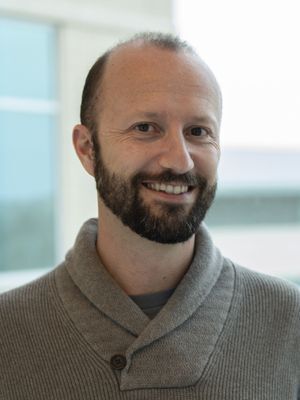
Cédric G. Geoffroy, PhD
Assistant Professor, Department of Neuroscience & Experimental Therapeutics, College of Medicine, Texas A&M University
Abstract
The Importance of the Age Factor After Spinal Cord Injury
Spinal cord injury (SCI) usually occurs in adults in their 20s and 60s, with an average age of incidence increasing from 29 years-old decades ago to 42 today. This is accompanied by an age-dependent decline in recovery. People living with SCI are continuously aging, with almost 80% being above 40. However, the lack of studies that incorporate age as a key biological variable has become a major obstacle in translating preclinical therapies into successfully treating the aging SCI population.
In the search for novel medicines for SCI, researchers are looking for compounds that increase neuron survival, neurite regenerative and synaptogenesis capacity, modulate the scar, or reduce demyelination. Phenotypic screens are a way to screen for new drugs with the desired cellular effects. Until now, all the screens use, at best, embryonic or early post-natal neural cells to find new compounds. Using neural cells with characteristics that differ from the targeted cells in clinical settings, without taking age and sex into consideration. Therefore, current screens result in false positives, drugs unlikely to work on adult neural cells, and in false negatives, prematurely dismissing compounds that are only beneficial to adult or aged neural cells.
We believe that testing drugs in the appropriate cell types and age will increase the likelihood of a particular drug having a beneficial effect in preclinical studies (in the correct age group). We developed a high-content phenotypic screening in a 384-well format (using robotic and automated imaging/analysis systems) allowing us to screen thousands of drugs in adult neural cells, in different species. We identified 1) drugs beneficial to adult cells prematurely dismissed by other screens; 2) drugs showing age-, sex-, and species-independent efficacy, 3) drugs with stronger effects in a particular age and sex demographic.
Bio
Dr. Geoffroy obtained his PhD from the University of Cambridge, UK, where he developed methods for fate mapping of spinal cord stem cells and strategies to promote neurogenesis with engineered transcription factors. He then moved to UC San Diego to study the roles of neuron-intrinsic and extrinsic molecules modulating axon growth and functional recovery after spinal cord injury. He demonstrated that the neuron intrinsic growth state determines neuronal responsiveness to changes in the extrinsic environment. He discovered an age-dependent decline in axon regeneration. Dr. Geoffroy is now an Assistant Professor in the Department of Neuroscience & Experimental Therapeutics, College of Medicine, Texas A&M. His research interests focus on understanding the impact of age on recovery after SCI, including the age-dependent decline in axon growth potential and the cellular and molecular changes occurring at the lesion. He’s also studying how chronic SCI impacts hepatic, cardiometabolic and bowel dysfunctions.






















